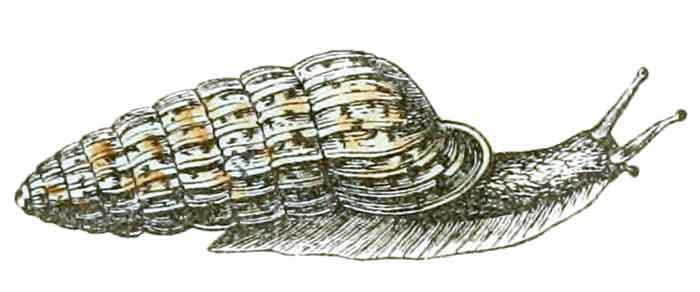Superregnum: Eukaryota
Cladus: Unikonta
Cladus: Opisthokonta
Cladus: Holozoa
Regnum: Animalia
Subregnum: Eumetazoa
Cladus: Bilateria
Cladus: Nephrozoa
Cladus: Protostomia
Cladus: Spiralia
Cladus: Lophotrochozoa
Phylum: Mollusca
Classis: Gastropoda
Subclassis: Heterobranchia
Infraclassis: Euthyneura
Cohors: Tectipleura
Subcohors: Panpulmonata
SuperOrdo: Eupulmonata
Ordo: Stylommatophora
SubOrdo: Helicina
Superfamilia Incertae sedis: Urocoptoidea
Familia: Cerionidae
Genera (2 + †3): Cerion – Mexistrophia – †Brasilennea – †Microcerion – †Protocerion
Name
Cerionidae Pilsbry, 1901
References
Primary references
Pilsbry, H.A. 1901 (1901-1902). Manual of Conchology, Second Series: Pulmonata 14: 174.
Additional references
Schileyko, A.A. 1999. Treatise on Recent terrestrial pulmonate molluscs. Part 4: Draparnaudiidae, Caryodidae, Macrocyclidae, Acavidae, Clavatoridae, Dorcasiidae, Sculptariidae, Corillidae, Plectopylidae, Megalobulimidae, Strophocheilidae, Cerionidae, Achatinidae, Subulinidae, Glessulidae, Micractaeonidae, Ferrussaciidae. Ruthenica Supplement 2: 470.
Links
Cerionidae in the World Register of Marine Species

Cerion chrysalis
Cerionidae is a family of air-breathing land snails, terrestrial pulmonate gastropod mollusks in the superfamily Urocoptoidea.[3]
Pre-2008 taxonomy
According to the taxonomy of the Gastropoda by Bouchet & Rocroi, 2005),[4] the family Cerionidae is classified in the superfamily Orthalicoidea, within the informal group Sigmurethra, itself belonging to the clade Stylommatophora within the clade Eupulmonata. The family Cerionidae has no subfamilies.[4]
2008 taxonomy
Uit de Weerd (2008)[3] moved the Cerionidae to the newly established superfamily Urocoptoidea based on molecular phylogeny research.[3]
Fossil record
The oldest fossil cerionid is C. acherontis from the Upper Cretaceous Hell Creek Formation, in Montana, northwestern USA.[5] The second oldest record is the genus Brasilennea from the Brazilian Paleocene Itaboraí Basin, in Rio de Janeiro.[6]
Genera
Genera within the Cerionidae include:
†Brasilennea Maury, 1935[7]
Cerion Röding, 1798 - the type genus of the family Cerionidae[4]
Mexistrophia Thompson, 2011[8]
References
Pilsbry H. A. (1901). Manual of Conchology (2)14(55): 174.
"Cerion: a web-based resource for Cerion research and identification". accessed 5 April 2011.
Uit de Weerd D. R. (2008). "Delimitation and phylogenetics of the highly diverse land snail family Urocoptidae (Gastropoda, Pulmonata) based on 28S rRNA sequence data: A reunion with Cerion". Journal of Molluscan Studies 74: 317–329. doi:10.1093/mollus/eyn023.
Bouchet, Philippe; Rocroi, Jean-Pierre; Frýda, Jiri; Hausdorf, Bernard; Ponder, Winston; Valdés, Ángel & Warén, Anders (2005). "Classification and nomenclator of gastropod families". Malacologia. 47 (1–2). Hackenheim, Germany: ConchBooks: 1–397. ISBN 3-925919-72-4. ISSN 0076-2997.
Roth, B. & Hartman, J.H. 1998. A probable Cerion (Gastropoda: Pulmonata) from Uppermost Cretaceous Hell Creek Formation, Garfield County, Montana. PaleoBios 18: 16–20.
Salvador, R.B.; Rowson, B.; Simone, L.R.L. 2011. Rewriting the fossil history of Cerionidae (Gastropoda: Pulmonata): new family assignment of the Brazilian Palaeocene genus Brasilennea Maury, 1935. Journal of Molluscan Studies 77: 445–447. doi:10.1093/mollus/eyr021
Maury, C.J. 1935. New genera and new species of fossil terrestrial Mollusca from Brazil. American Museum Novitates 764: 1–15.
Thompson, F.G. 2011. Mexistrophia, a new genus of Cerionidae from Mexico (Gastropoda: Pulmonata: Urocoptoidea). Nautilus 125(4): 182–192.
Retrieved from "http://en.wikipedia.org/"
All text is available under the terms of the GNU Free Documentation License

